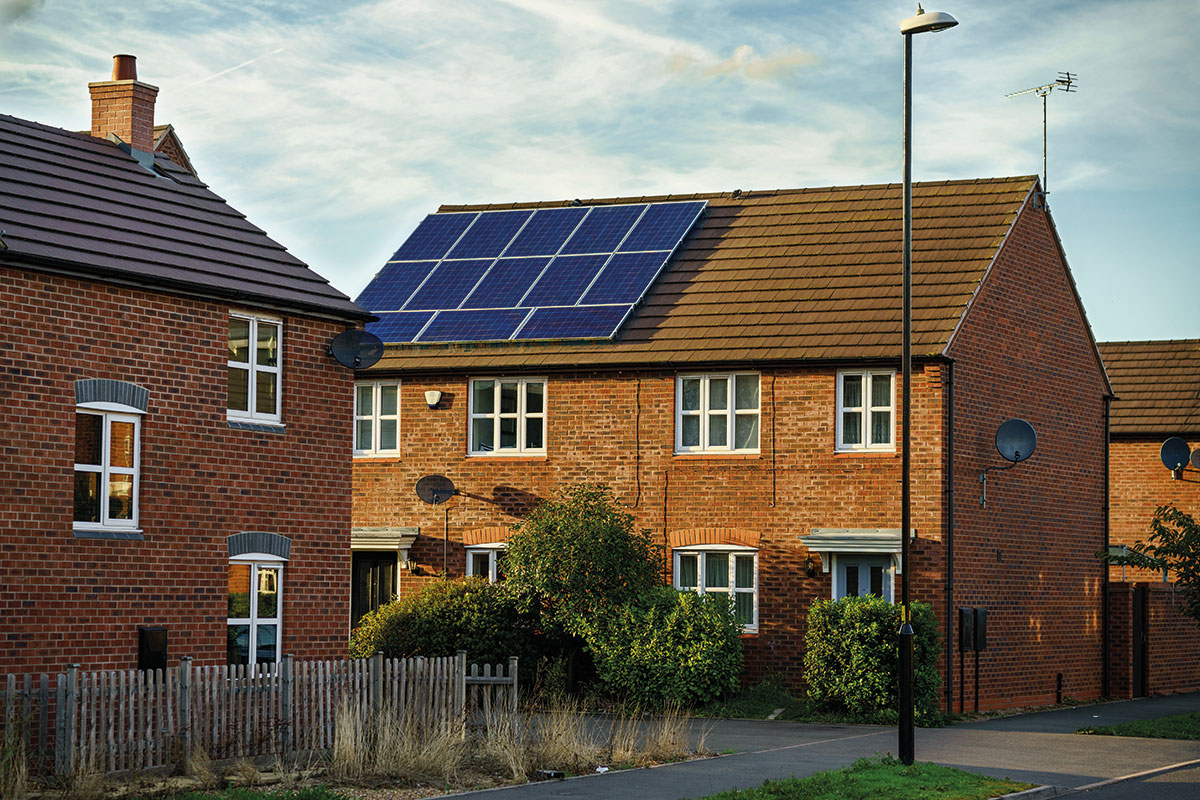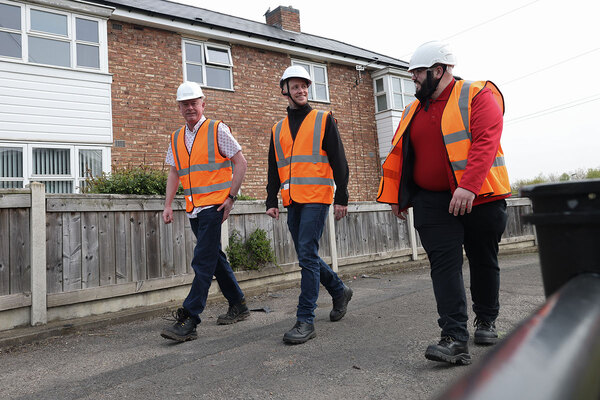
Jules Birch is an award-winning blogger who writes exclusive articles for Inside Housing
There are substantial holes in the government’s Heat and Buildings Strategy
The government’s approach of sticks and carrots leaves some weighty questions about our journey to decarbonised housing unanswered, writes Jules Birch
In so far as it can be called a strategy, the government’s plan for heat and buildings largely relies on the private sector, plus regulation to deliver its ambitious targets for net zero in housing.
What ‘new’ money there is – £800m for the Social Housing Decarbonisation Fund, £950m for Home Upgrade Grants – seems mostly to consist of allocations from sums already promised in the Conservatives’ manifesto.
The exceptions seem to be £450m for a Boiler Upgrade Scheme that will fund 90,000 replacement heat pumps over the next three years, with the government arguing that this will prime the market for its “ambition” of 600,000 a year for the next three years.
But that mismatch only highlights the contrast with Labour’s pledge of £60bn investment over the next 10 years and the Climate Change Committee’s estimate that it will cost a total of £250bn to decarbonise housing by 2050.
There is an even bigger gap between the strategy’s rhetoric about net zero and the reality that bringing as many homes as possible up to have an energy performance certificate (EPC) rating of C by 2035 will involve costly retrofits. Around 60% of existing homes are below EPC C.
And there are still big questions about whether new technologies will work, how decarbonisation will be delivered and how the targets and standards will be enforced.
Hydrogen is still seen as a potential alternative to heat pumps even though almost all the evidence suggests that it will be either at least as polluting as gas (blue hydrogen) or require significantly more renewable energy to produce (green hydrogen) and that large-scale conversion of the gas grid would be needed to use either.
A final decision is due by 2026, in deference to lobbying by business interests, but the danger of greenwashing is acute. For example, house builders will not need much encouragement to argue that they are meeting a Future Homes Standard that requires new homes to be ‘zero-carbon ready’ by 2025 with ‘hydrogen-ready’ gas boilers.
On improving existing homes, the failure of the Green Homes Grant illustrated the problems that can be caused by sudden injections of investment into a market that is not ready for it.
But for all the fine words in the strategy about skills and training and faith in the market to deliver, there is little sense of a long-term plan that firms and colleges can rely on.
Beyond some funding for heat networks, the strategy has next to nothing to suggest support for area-based solutions that could deliver decarbonisation more efficiently than piecemeal improvements to individual properties.
There was no mention of a key question from a consumer perspective: who would you ask for advice on the best way to decarbonise your house? Without some system of independent and trusted advice for home owners, it will be boom time for cowboy builders.
In terms of enforcement, we already knew that new homes as built have often failed to deliver on performance as specified. Even if homes are well built, will the products inside them perform as promised by manufacturers that the Grenfell Tower inquiry has shown are experts at manipulating testing regimes?
That’s just one example of the regulation that will be needed to deliver on net zero and the strategy contains ‘sticks’ to go with those ‘carrots’ of investment for social and private landlords and homeowners.
This is most explicit is in the private rented sector, where the government will ratchet up the Minimum Energy Efficiency Standard required for landlords to be able to rent a home from EPC E by 2020 to D by 2025 and C by 2030.
“The strategy also does not spell out is where the costs of all this will eventually fall. With such a large gap between the costs of retrofit and the public investment on offer, the answer looks set to be disproportionately the poorest tenants and owners”
In the social sector, work continues on the review of the Decent Home Standard and the strategy says the government will consider “a long-term regulatory standard to improve social housing to EPC band C, with levers required to decarbonise the stock in line with net zero”.
However, in the absence of funding to accompany those levers, the result will be yet more costs for social landlords already paying the bills for building safety and that will in turn mean even fewer affordable homes for those who need them.
Pressure on homeowners will come via mandatory requirements on mortgage lenders to disclose the energy performance of homes on which they lend, voluntary improvement targets by 2030 and possibly a net zero Minimum Energy Efficiency Standard by 2050.
Potentially, therefore, it could become progressively more difficult to buy and sell older homes that have not been improved as well as to rent them out. Given the politics of that, no wonder it is not made explicit.
The strategy also does not spell out is where the costs of all this will eventually fall. With such a large gap between the costs of retrofit and the public investment on offer, the answer looks set to be disproportionately the poorest tenants and owners.
While the strategy has a lot of fine words about fuel poverty, it does not address these questions of social justice for the people living in the homes that will be improved.
And that is not the only thing missing. On tax, the strategy does mention a potential rebalancing of green levies between gas and electricity when the current crisis is over, which makes sense.
Not mentioned at all is VAT on the products that will help to deliver net zero (zero-rating heat pumps would cut the cost by 20% at a stroke). The same applies to the longstanding problem that new build housing is zero-rated for VAT, whereas refurbishment work is charged at the full rate – there is no discussion of issues with embodied carbon emissions.
With the Conference of the Parties (COP26) due to start in two weeks, the heat in buildings and zero-carbon strategies are a start on the UK’s ambitious journey to net zero and the minimum that could be expected from the government hosting the conference. What they will really amount to once the pressure is off very much remains to be seen.
Jules Birch, columnist, Inside Housing
Sign up for our asset management newsletter
Already have an account? Click here to manage your newsletters













